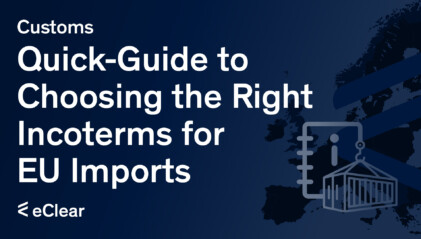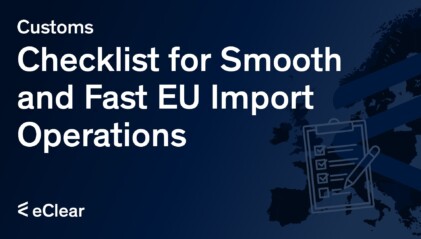Incoterms, or International Commercial Terms, are globally recognised trade terms that streamline international transactions and global trade. By clearly defining the responsibilities, risks, and costs of transporting goods between buyers and sellers, these terms published by the International Chamber of Commerce (ICC) serve as a common language for international traders. They effectively reduce the potential for misunderstandings and disputes, ensuring smoother export and import processes.
The Purpose of Incoterms
The primary purpose of Incoterms, or International Commercial Terms, is to simplify and standardise trade terms in international transactions, fostering greater clarity and efficiency in global commerce and supply chain management. Published by the International Chamber of Commerce (ICC) and updated periodically to reflect evolving trade practices, Incoterms establish a common framework for buyers and sellers in cross-border trade. They reduce potential misunderstandings and allocate costs and risks associated with transporting and delivering goods. Despite their crucial role in international trade agreements, it is essential to note that Incoterms do not encompass all aspects of a trade contract, such as the price, payment terms, or the ultimate resolution of disputes. Nonetheless, Incoterms provide a solid foundation for smoother and more effective trade relationships by facilitating a clear understanding of each party’s obligations.
Overview of Incoterms 2020
Incoterms 2020, the most recent update to the International Commercial Terms, consists of 11 standardised trade terms that govern various aspects of international transactions. Each Incoterm represents a unique combination of responsibilities, risks, and costs allocated between the buyer and the seller, providing a clear framework for efficient and transparent global trade.
Incoterms applicable to any mode of transport
EXW (Ex Works): The seller makes the goods available at their premises. The buyer is responsible for all transportation and export/import formalities.
FCA (Free Carrier): The seller delivers the goods to a designated carrier, after which the buyer assumes responsibility for all transportation costs and risks.
CPT (Carriage Paid To): The seller arranges and pays for transportation to a specified destination, but the buyer assumes risk once the goods are handed over to the first carrier.
CIP (Carriage and Insurance Paid To): Similar to CPT, with the addition of the seller providing insurance for the goods during transit.
DAP (Delivered At Place): The seller is responsible for transportation and assumes risk until the goods reach the specified destination, ready for unloading.
DPU (Delivered At Place Unloaded): The seller is responsible for transportation and unloading the goods at the specified destination.
DDP (Delivered Duty Paid): The seller assumes all responsibilities, risks, and costs, including import duties and taxes, until the goods reach the buyer’s designated location.
Incoterms specific to sea and inland waterway transport
FAS (Free Alongside Ship): The seller delivers the goods alongside the vessel at the specified port. The buyer assumes responsibility for all costs and risks.
FOB (Free On Board): The seller is responsible for loading the goods onto the vessel at the specified port, after which the buyer assumes responsibility for all costs and risks.
CFR (Cost and Freight): The seller arranges and pays for transportation to the specified destination port, but does not cover insurance. The buyer assumes risk once the goods are loaded onto the vessel.
CIF (Cost, Insurance, and Freight): Similar to CFR, with the addition of the seller providing insurance for the goods during transit.
Understanding the Key Elements of Incoterms
Delivery point: The delivery point is the location where the seller must deliver the goods to the buyer or their designated carrier. It is essential to define this point precisely. It determines when the risk and responsibility for the transfer of the goods from the seller to the buyer.
Transfer of risk: Incoterms define the point at which the risk of loss or damage to the goods transfers from the seller to the buyer. This point may differ from the delivery point and is critical in determining which party is responsible for insuring the goods during transit.
Division of transportation costs: Each Incoterm allocates transportation costs, such as freight charges, insurance, and customs duties, between the buyer and the seller. This clear division of costs helps prevent disputes and misunderstandings.
It is essential to distinguish between “delivery” and “taking delivery” in Incoterms. “Delivery” refers to the seller’s obligation to make the goods available to the buyer at the specified delivery point. In contrast, “taking delivery” refers to the buyer’s responsibility to collect the goods from the delivery point.
To ensure smooth international transactions and minimise the risk of disputes, it is crucial to specify the chosen Incoterm in sales contracts and the designated place or port of delivery.
How to Choose the Right Incoterm
Choosing the right Incoterm ensures smooth international transactions and minimises misunderstandings between buyers and sellers. To select the most appropriate Incoterm for a specific transaction, consider the following factors:
Nature of goods: Fragile, perishable, or high-value goods may require additional insurance or specialised handling, making certain Incoterms like CIP (Carriage and Insurance Paid To) or CIF (Cost, Insurance, and Freight) more suitable.
Shipping distance: Longer shipping distances typically entail higher transportation costs and an increased risk of damage or loss. Incoterms that allocate more responsibility to the seller, such as DAP (Delivered at Place) or DDP (Delivered Duty Paid), may be preferred.
Experience in international trade: If one party has more experience in international trade or is better equipped to handle import/export procedures, they may assume more responsibility. For instance, a seller with extensive experience exporting goods might opt for FOB (Free on Board) or CFR (Cost and Freight).
Familiarity with local regulations: Parties familiar with local import/export regulations and customs clearance processes may choose Incoterms that place more responsibility on them, such as FCA (Free Carrier) for the seller or DDP (Delivered Duty Paid) for the buyer.
Cost allocation preferences: Each Incoterm represents a unique allocation of costs and risks between the buyer and seller. Assessing each party’s willingness and ability to bear these costs can help determine the most suitable Incoterm.
Common Misconceptions and Pitfalls
Confusing Incoterms with domestic trade terms: Incoterms are specifically designed for international transactions and should not be confused with domestic trade terms that may have different implications.
Assuming Incoterms cover all aspects of a trade agreement: While Incoterms govern the allocation of responsibilities, risks, and costs associated with the transport and delivery of goods, they do not encompass all aspects of a trade contract, such as price, payment terms, or dispute resolution.
Neglecting updates to Incoterms: The International Chamber of Commerce (ICC) periodically updates Incoterms to reflect changes in global trade practices. Always use the most recent version, currently Incoterms 2020, to ensure compliance with the latest standards.
Failing to specify an Incoterm in contracts: To avoid ambiguity and potential disputes, it is essential to determine the chosen Incoterm in sales contracts and the designated place or port of delivery.






